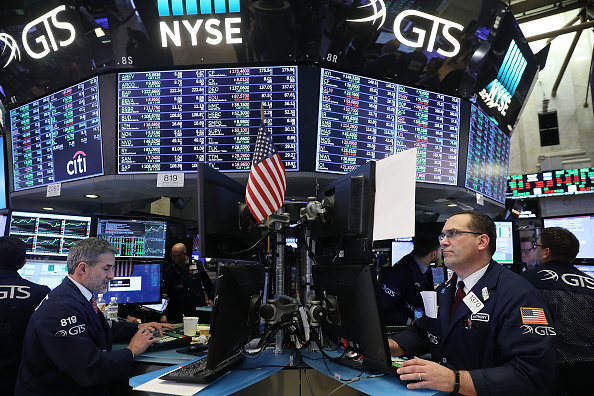As the US presidential election enters its final stages, the outcome is still uncertain. High-ranking figures on Wall Street, political gamblers, and cryptocurrency traders are all betting on former President Trump to return to the White House. However, the American stock market is telling a different story.
According to a report by Politico on Thursday, the US stocks have been surging, with the S&P 500 index climbing more than 10% since August. While the stock market may not necessarily represent the broader economic conditions, its performance leading up to Election Day has historically been a strong indicator of whether the incumbent party’s candidate can retain control of the White House. Over the past 96 years, except for four presidential elections, the S&P 500 index has accurately predicted the outcome.
In theory, a decline in the index indicates that investors are preparing for more uncertainty with a new government; while an increase suggests that the market expects the incumbent party to win. The recent rise in the index indicates that Vice President Kamala Harris may be on track for a victory.
Adam Turnquist, Chief Technical Strategist at LPL Financial, stated, “The market believes Kamala Harris will win. When the incumbent party has a greater chance of winning the White House, most of us know their policies. The market feels quite comfortable with this certainty.”
However, there are many skeptics on Wall Street regarding the predictive ability of the S&P 500 index. Monica Guerra, US Policy Director at Morgan Stanley Wealth Management, mentioned that the market is not a crystal ball; the steady climb in the S&P throughout the year is often driven by profits from a few tech giants or news of the Fed’s fight against inflation, rather than elections.
Nonetheless, the S&P 500 index, which tracks the performance of the largest publicly traded companies in the US, has proven to have foresight in predicting presidential elections. LPL Financial stated that if the index climbs in the three months leading up to the voting, the incumbent party’s candidate often wins; if it falls, the incumbent party tends to lose.
Data collected by LPL shows that in the past 24 presidential campaigns, the index has correctly predicted the election outcome 20 times, including the surprising victory of Trump in 2016. According to LPL’s data, the index fell by 2.3% before Election Day, indicating an imminent change in the ruling party.
However, the S&P 500 index is not a perfect forecasting tool. Its trend in 2020 suggested that Trump was likely to beat Biden for reelection.
Guerra remarked, “We now have conflicting indicators, partly because of the high degree of voter polarization and the tense elections in swing states. It’s a real battle. You can see this momentum in the market and the economy.”
Reena Aggarwal, a finance professor at Georgetown University, is another skeptic. She explained that today’s stock indices are less representative of the economy than decades ago because they are mostly driven by Silicon Valley companies. Moreover, there are more large private companies that do not trade on the stock exchange.
In the past, the market could better represent the “broader economy” with significant weight from industrial and energy giants with vast workforces in the index. However, Aggarwal noted, “There is a disconnect between the market and the broader economy now.”
Justin Grimmer, a public policy professor at Stanford University, believes that the historical correlation between economic indicators and who will win the presidential election is “clearly” important but only to a certain extent.
He said that there are multiple patterns that can be found from various data around the world. As the election day approaches, voters’ views on the economy are divided, so the stock market and the S&P 500 index may not be the most useful in determining who will ultimately be elected. “You can only use history to a certain extent. We can only watch and wait, much like flipping a coin,” he said.

